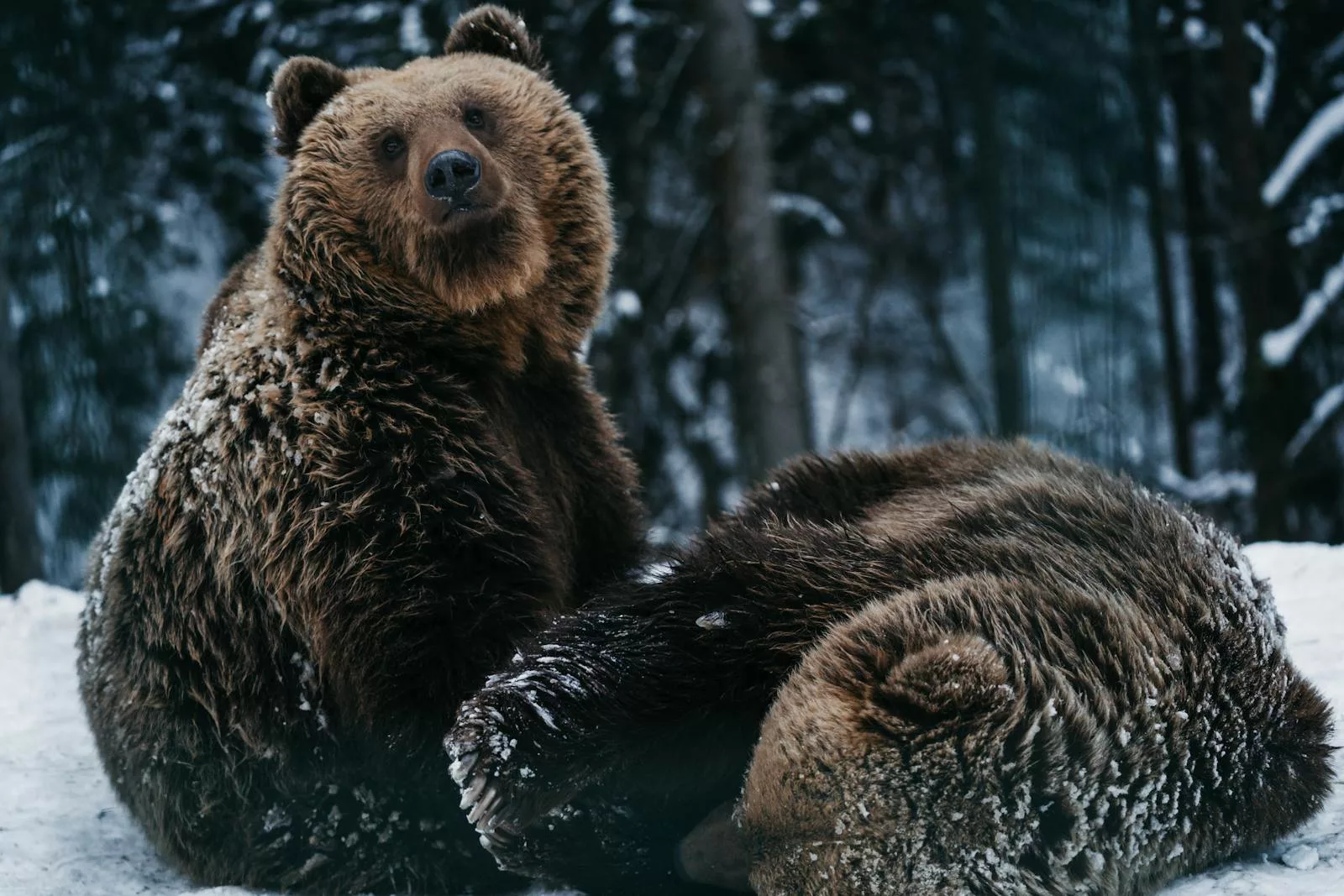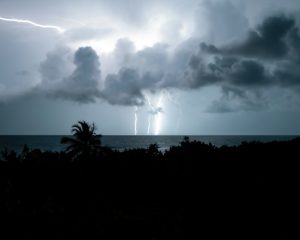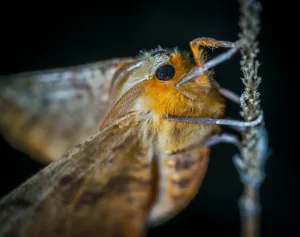Bears are among nature’s most iconic hibernators, retreating into dens and seeming to disappear for months on end during winter. For centuries, this behavior has fascinated scientists, storytellers, and anyone who has witnessed the seasonal rhythms of the animal kingdom. But what exactly is hibernation, and why do bears hibernate? While often simplified as “sleeping through the winter,” bear hibernation is a complex physiological and behavioral adaptation that allows these animals to survive harsh conditions and scarce resources.
In this article, we’ll explore the science behind bear hibernation, the biological processes involved, and how this behavior helps bears survive. We’ll also explore the differences between true hibernation and the kind of dormancy bears exhibit, and dispel common myths about this extraordinary survival strategy.
What Is Hibernation?
The Definition of Hibernation
Hibernation is a state of greatly reduced metabolic activity that allows animals to conserve energy during periods of limited food availability and extreme environmental conditions. It is a survival strategy that involves profound physiological changes, including lower body temperature, slower heart rate, reduced breathing, and decreased energy expenditure.
Many animals hibernate, including bats, ground squirrels, and some reptiles and amphibians. However, not all hibernation is the same. For example, ground squirrels experience a dramatic drop in body temperature during hibernation, while bears exhibit a less extreme form of dormancy.
Bears and “True” Hibernation
Unlike smaller mammals, bears do not undergo the drastic body temperature reductions typically associated with true hibernation. Instead, they enter a state known as torpor, which shares similarities with hibernation but has key differences. During torpor, a bear’s body temperature drops only slightly, from around 38°C (100°F) to 31–34°C (88–93°F). Heart rate and metabolic rate also decrease significantly, but not to the same extent as in true hibernators.
This distinction has led some scientists to classify bear hibernation as “super hibernation” due to its unique characteristics. Despite the differences, torpor serves the same essential purpose: helping bears conserve energy and survive the winter months.
Why Do Bears Hibernate?
1. Food Scarcity During Winter
The primary reason bears hibernate is to survive periods of food scarcity during winter. In temperate and Arctic regions, winter brings cold temperatures, snow-covered landscapes, and a dramatic reduction in available food. Plants stop growing, insects become inactive, and prey animals are harder to find. For bears, which require large amounts of food to sustain their massive bodies, winter presents an insurmountable challenge to finding adequate nutrition.
By hibernating, bears reduce their need for food and water, relying instead on fat reserves accumulated during the warmer months. This adaptation allows them to survive without foraging or hunting when resources are scarce.
2. Energy Conservation
Hibernation is also a way for bears to conserve energy when their environment does not support active lifestyles. By entering a state of torpor, bears lower their metabolic rate, which significantly reduces the amount of energy they need to survive. This energy efficiency is critical for enduring the long winter months when movement and hunting would be futile.
A hibernating bear’s heart rate slows from 40–50 beats per minute to as few as 8–10 beats per minute. Breathing becomes shallow and infrequent, further conserving energy. These changes allow the bear to subsist on its fat reserves without expending unnecessary energy.
3. Protection from Harsh Conditions
Winter is not only a time of food scarcity but also a season of extreme cold and unpredictable weather. Hibernation allows bears to avoid these harsh conditions by retreating to dens or other sheltered locations. These dens, often dug into hillsides or under tree roots, provide insulation and protection from freezing temperatures, snow, and predators.
The combination of energy conservation and shelter helps bears emerge from hibernation in the spring healthy and ready to resume their active lifestyles.
The Physiology of Bear Hibernation
Fat Accumulation: Preparing for the Winter
Bears prepare for hibernation during the late summer and fall by entering a phase called hyperphagia, during which they consume massive amounts of food to build fat reserves. They may eat up to 20,000 calories a day, gaining several hundred pounds in the process. This fat serves as their primary energy source during hibernation.
Hyperphagia is triggered by hormonal changes and environmental cues such as shorter daylight hours and dropping temperatures. During this time, bears prioritize high-calorie foods like berries, nuts, fish, and small mammals to maximize their fat stores.
Metabolic Adjustments
Once hibernation begins, a bear’s body undergoes remarkable metabolic changes. The most significant adjustment is the reliance on fat for energy. Unlike humans, who would suffer severe muscle loss and organ damage if they relied solely on fat for months, bears are able to preserve their muscle mass and organ function. This is due to their ability to recycle nitrogen and other nutrients, preventing muscle degradation.
Additionally, bears produce waste products like urea during hibernation, but they are able to reabsorb and metabolize these substances, avoiding the need to urinate. This process helps maintain hydration and prevents the buildup of toxins in the body.
Temperature Regulation
Unlike true hibernators, bears maintain a relatively stable body temperature during torpor. This allows them to wake up more easily if threatened or disturbed. For example, a hibernating bear can quickly become alert to defend itself or protect its cubs from predators.
This higher body temperature also supports the development of bear cubs, which are born during hibernation in January or February. The mother bear’s ability to maintain a warm environment in the den is crucial for the survival of her offspring.
Bear Hibernation in Different Species
Black Bears
Black bears are the most common hibernating bear species in North America. They typically enter hibernation in late November or December and emerge in March or April. Black bears prefer dens in hollow trees, caves, or dug-out burrows, where they remain largely inactive throughout the winter.
During hibernation, black bears experience a 50–60% reduction in their metabolic rate and rely entirely on their fat reserves for energy. Females often give birth to one to three cubs during hibernation, nurturing them with milk until they are ready to leave the den in spring.
Grizzly Bears
Grizzly bears, a subspecies of brown bears, hibernate in regions with harsh winters, such as Alaska and the Rocky Mountains. Similar to black bears, grizzlies prepare for hibernation by consuming large quantities of food to build fat reserves. Their dens are typically located in remote areas to avoid human disturbances.
Grizzlies are particularly notable for their ability to adapt their hibernation behavior based on environmental conditions. For instance, in areas with milder winters or abundant food, they may reduce their hibernation period or remain partially active.
Polar Bears
Unlike black bears and grizzlies, polar bears do not hibernate in the traditional sense. Male and non-pregnant female polar bears remain active year-round, relying on their fat reserves and hunting skills to survive the Arctic winter. However, pregnant female polar bears enter a hibernation-like state known as denning. During this time, they retreat to snow dens to give birth and nurse their cubs.
Denning allows polar bear mothers to conserve energy and protect their young until they are ready to venture out in the spring. This adaptation is essential for survival in one of the harshest environments on Earth.
Misconceptions About Bear Hibernation
Myth 1: Bears Sleep the Entire Winter
A common misconception is that bears remain asleep throughout hibernation. In reality, bears are not in a continuous state of deep sleep. While they are largely inactive, they can wake up briefly to adjust their position or respond to external stimuli. This ability to rouse quickly is one of the key differences between bear torpor and true hibernation.
Myth 2: Bears Eat and Drink During Hibernation
Another myth is that bears occasionally eat or drink during hibernation. In fact, bears do not consume any food or water during this period. They rely entirely on their fat reserves for energy and their body’s ability to recycle nutrients to stay hydrated.
Myth 3: All Bears Hibernate
Not all bears hibernate. As mentioned earlier, polar bears do not hibernate in the same way as black bears or grizzlies. Additionally, bears living in warmer climates or areas with year-round food availability may remain active throughout the winter.
Conclusion
Hibernation is an extraordinary survival strategy that allows bears to endure the challenges of winter by conserving energy, avoiding harsh conditions, and relying on stored fat reserves. While not true hibernators, bears exhibit a unique form of dormancy known as torpor, which is finely tuned to their biological and environmental needs.
Understanding the science of bear hibernation provides valuable insights into the resilience and adaptability of these remarkable animals. As climate change and habitat loss continue to impact bear populations, studying their behavior and biology is more important than ever for ensuring their survival in the wild.




